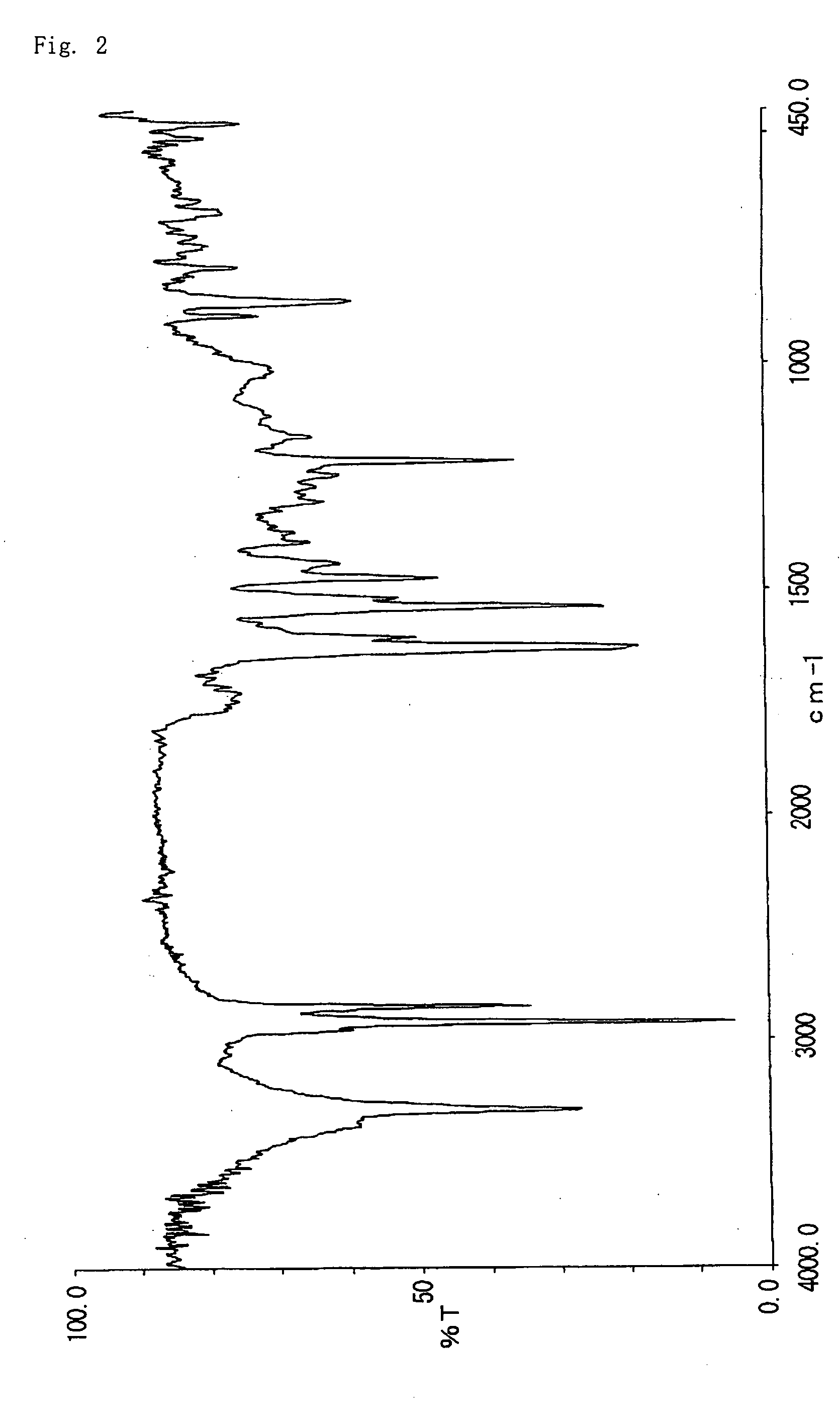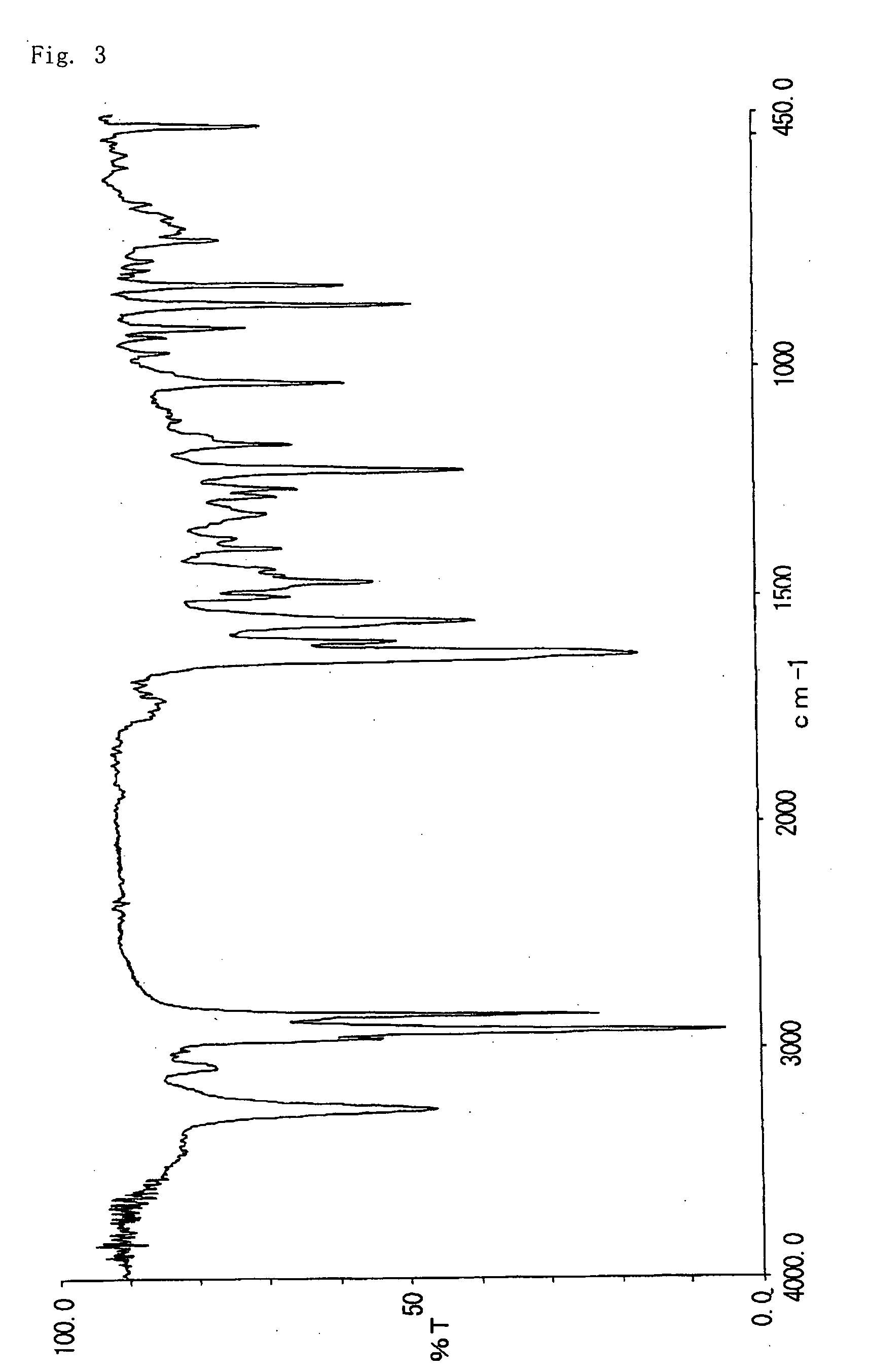Naphthol derivative and charge control agent comprising the same
a charge control agent and derivative technology, applied in the direction of instruments, electrographic processes, organic chemistry, etc., can solve the problem of insufficient amount of electrostatic charge generated
- Summary
- Abstract
- Description
- Claims
- Application Information
AI Technical Summary
Benefits of technology
Problems solved by technology
Method used
Image
Examples
example 1
[0060] 18.8 g of 2-hydroxynaphthalene-6-carboxylic acid was reacted with 94 g of acetic anhydride in 94 g of acetic acid at 80° C. for 4 hours. The reaction liquid was poured to 500 g of water and the precipitate was filtrated and washed thoroughly with methanol and water and then dried to give 22.3 g of 2-acetoxynaphthalene-6-carboxylic acid.
[0061] Thus obtained 22.3 g of 2-acetoxynaphthalene-6-carboxylic acid was reacted with 17.3 g of thionyl chloride in tetrahydrofuran at 40° C. for 2 hours. The excess thionyl chloride in the resulting reaction liquid was distilled out under reduced pressure, then 36.0 g of n-dodecyl amine was added to allow the reaction at 65° C. for 8 hours. Tetrahydrofuran in the reaction liquid was distilled out under reduced pressure, and to which 223 g of acetic acid was added. The resulting suspension was dissolved by heating to 80° C., and to which the 223 g of water was added. After cooling to room temperature, the precipitate was filtrated, washed tho...
example 2
[0067] 8.0 g of 2-acetoxy-6-n-dodecyl aminocarbonylnaphthalene obtained in Example 1 was suspended in 64 g of 50% methanol-water. To the suspension, 3.4 g of 48% sodium hydroxide aqueous solution was added and allowed to react at 60° C. for 1 hour. The reaction liquid was neutralized with 5% hydrochloric acid and stirred for 30 minutes and then precipitation was filtrated, washed thoroughly with methanol and water, dried to give 6.8 g of 2-hydroxy-6-n-dodecyl aminocarbonylnaphthalene (decomposition point: 329° C.). The infrared absorption spectrum (KBr) of the compound is shown in FIG. 2. The triboelectric charge was measured by blow-off method as described in example 1. The triboelectric charge of the compound was +6.7 μC / g.
example 3
[0068] 3.6 g of 2-hydroxy-6-n-dodecyl aminocarbonylnaphthalene obtained in example 2 was dissolved in 36 g of dimethylformamide. To this solution, 1.7 g of potassium carbonate and 2.2 g of methyl iodide were added, and allowed to react at 40° C. for 8 hours. The reaction liquid was poured to 180 g of water, and then precipitate was filtrated, washed thoroughly with methanol and water, dried to give 3.1 g of 2-methoxy-6-n-dodecyl aminocarbonylnaphthalene (Decomposition point: 324° C.). The infrared absorption spectrum (KBr) of the compound is shown in FIG. 3. The triboelectric charge was measured by blow-off method as described in example 1. The triboelectric charge of the compound was +17.6 μC / g.
PUM
| Property | Measurement | Unit |
|---|---|---|
| particle size | aaaaa | aaaaa |
| particle size | aaaaa | aaaaa |
| decomposition point | aaaaa | aaaaa |
Abstract
Description
Claims
Application Information
 Login to View More
Login to View More - R&D
- Intellectual Property
- Life Sciences
- Materials
- Tech Scout
- Unparalleled Data Quality
- Higher Quality Content
- 60% Fewer Hallucinations
Browse by: Latest US Patents, China's latest patents, Technical Efficacy Thesaurus, Application Domain, Technology Topic, Popular Technical Reports.
© 2025 PatSnap. All rights reserved.Legal|Privacy policy|Modern Slavery Act Transparency Statement|Sitemap|About US| Contact US: help@patsnap.com



